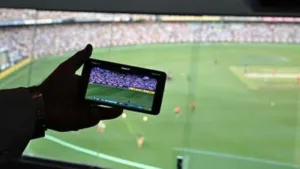 At the TV Connect conference in London recently, Hans Agardh of Qualcomm was attending to talk about the new LTE Broadcast Alliance. We caught up with him in a phone conference.
At the TV Connect conference in London recently, Hans Agardh of Qualcomm was attending to talk about the new LTE Broadcast Alliance. We caught up with him in a phone conference.
LTE Broadcast (LTE-B) uses multicast cellular radio technology to transmit content (audio, video or data) to multiple recipients. Where multiple people want to access the same content at the same time, for example a sports or other special event, it is much more efficient to multicast, rather than sending separate streams to individual users. In fact, Agardh told us that as few as two to three users wanting the same content is enough to make it worthwhile from a bandwidth point of view, although switching to and from multicast has an overhead, so operators are unlikely to make the switch unless more users are likely to want to share content.
The concept has been around for some time, but has not seen much take up, so far. For this reason, Verizon, Korea Telecom (KT), EE and Telstra have set up the LTE Broadcast Alliance which is a marketing and promotion organisation (rather than a technical standards body). Verizon and KT have been among the strongest of the supporters of the concept. The group wants to make sure that all client devices in the mid- and upper-ranges of the phone market support the concept by 2017.
Of course, LTE is potentially in competition with other services such as Wi-fi. However, Agardh said that in many cases, broadcasting via LTE using existing infrastructure, especially, for example – and tests have previously done at the Indy 500, LTE may be able to cover not only a stadium, but parking areas and other locations as well.
 LTE B was tested in Australia at a cricket match
LTE B was tested in Australia at a cricket match
This week, Ericsson and Turkcell said that they had used LTE broadcast to show content at a basketball match between Fenerbahce and Galatasaray Odeabank, two of Istanbul’s biggest basketball teams. Ericsson and Turkcell highlighted that “real time” action is essential to the success of this kind of operation. The technology used was HEVC compression with MPEG-DASH combined with Evolved Multimedia Broadcast Multicast Services (eMBMS) which are integrated into LTE Broadcast. Ericsson said that the demonstration “proved that it is possible to provide a high quality and immersive stream that doesn’t just match, but can actually exceed the live viewing experience sports fans can access through current broadcast TV delivery”. (BR)

